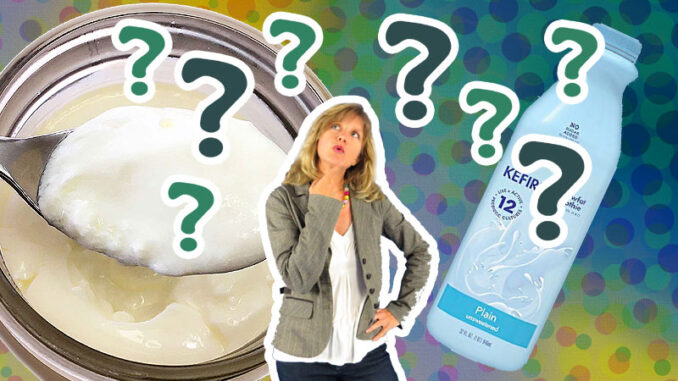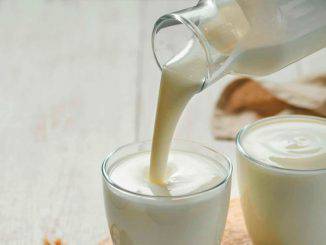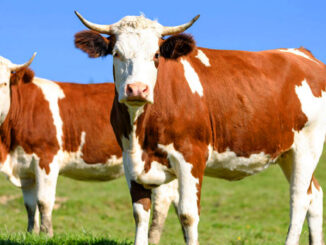
Why don’t we buy our ready Kefir from the nearest store, instead of making all that mess with fermenting, straining, and bottling Kefir at home?
Is homemade Kefir really better? Good question that has a straightforward answer: homemade Kefir is undoubtedly better than the store-bought one. But what exactly makes it better than the commercially available one?
Homemade Kefir is better than the store-bought one because:
- It is significantly richer in live probiotic bacteria and yeasts.
- It tastes better.
- It is more cost-effective.
Still, there’s also a long and more detailed explanation, so let’s dig deeper into all details and find out why we should always choose homemade Kefir instead of a store-bought one.
The constraint called “shelf life”
One of the biggest drawbacks of store-bought Kefir is that commercial Kefir producers are forced to ensure that their product not only meets a range of regulatory requirements but also possesses a decent shelf life allowing it to meet these requirements for more extended periods like, in most cases, several days.
The real problem here is that Kefir is a “living product”. It contains live bacteria and yeasts that continue their activity indefinitely unless this activity gets forcefully stopped.
The fermentation of Kefir continues even after the Kefir grains get sieved out of the initial brew. This stage of fermentation has its name and it is called “second ferment” or “secondary fermentation”. During this stage, the Kefir liquid constantly changes and gets thicker, sourer, and tangier with each passing hour. Moreover, during this stage of fermentation, a build-up of gases (carbon dioxide) starts to occur, and if the bottle of Kefir is tightly sealed, it can even explode.
Obviously, these facts are rather unacceptable for a commercially sold product. No Kefir producer would be allowed to sell a product that changes its quality and taste with each passing hour, and even risks exploding if the sealed package is left unattended.
That is the reason why commercial Kefir producers are forced to stop most (if not all) of the fermentation processes in Kefir before it gets bottled. This is usually done by adding artificial preservatives or even by pasteurizing the fermented Kefir before it gets bottled and sealed for sale.
Unfortunately, these actions aimed at ensuring a decent shelf life of bottled Kefir also affect its probiotic powers. It is very unlikely for Kefir’s bacteria to survive the addition of preservatives, and nearly impossible for them to survive pasteurization.
As a result, although some of the commercial store-bought Kefir packs may taste similar to fresh homemade Kefir, their probiotic powers cannot be even close to the ones of homemade Kefir.
It is no coincidence that most commercially sold packages of ready-to-drink Kefir are advertised as containing up to 10 or 12 different species of bacteria, whereas most of the homemade Kefir fermented with natural Kefir grains are known to contain up to 50 species and subspecies of live probiotic bacteria and yeasts.
The constraint called “standardization”
You may have heard that the list of bacteria and yeasts in each batch of Kefir grains may be different. The set of microorganisms in Kefir grains found in Brazil, for instance, is slightly different from the one of Kefir grains found in the US, Russia, China, or Tibet. Even the Kefir grains spread in different states of the US may also contain different sets of probiotic bacteria.
The following table lists the main bacterial and yeast species found in samples of Kefir grains taken from different regions of the world.
| Probiotic microorganisms in Kefir grains | Country |
|---|---|
| Lactobacillus kefir, Lactobacillus kefiranofaciens, Lactobacillus paracasei, Lactobacillus plantarum, Lactococcus lactis ssp. lactis, Kluyveromyces marxianus, Lactobacillus parakefir, Saccharomyces cerevisiae, Saccharomyces unisporus, Leuconostoc mesenteroides, Acetobacter sp., Saccharomyces sp., Lactococcus lactis ssp. lactis biovar diacetylactis, Lactococcus lactis, Lactobacillus kefiri, Lactobacillus parakefiri | Argentina |
| Lactobacillus kefiri, Lactobacillus kefiranofaciens, Leuconostoc mesenteroides, Lactococcus lactis, Lactobacillus paracasei, Lactobacillus helveticus, Gluconobacter japonicus, Lactobacillus uvarum, Acetobacter syzygii, Lactobacillus satsumensis, Saccharomyces cerevisiae., Leuconostoc sp., Streptococcus sp., Acetobacter sp., Bifidobacterium sp., Halococcus sp., Lactobacillus amylovorus, Lactobacillus buchneri, Lactobacillus crispatus, Lactobacillus kefiranofaciens ssp. kefiranofaciens, Lactobacillus kefiranofaciens ssp. kefirgranum, Lactobacillus parakefiri | Brazil |
| Lactobacillus brevis, Lactobacillus delbrueckii ssp. bulgaricus, Lactobacillus helveticus, Streptococcus thermophilus, Lactobacillus casei ssp. pseudoplantarum, Kluyveromyces marxianus var. lactis, Saccharomyces cerevisiae, Candida inconspicua, Candida maris, Lactobacillus lactis ssp. lactis | Bulgaria |
| Lactobacillus kefiranofaciens, Leuconostoc mesenteroides, Lactococcus lactis, Lactobacillus helveticus, Kluyveromyces marxianus, Saccharomyces cerevisiae, Pseudomonas sp., Kazachstania unispora, Kazachstania exigua, Lactobacillus kefiri, Lactobacillus casei, Bacillus subtilis, Pichia kudriavzevii, Leuconostoc lactis, Lactobacillus plantarum, Acetobacter fabarum, Pichia guilliermondii, Lactococcus sp., Lactobacillus sp., Acetobacter sp., Shewanella sp., Leuconostoc sp., Streptococcus sp, Acinetobacter sp., Pelomonas sp., Dysgonomonas sp., Weissella sp., Shewanella sp. | China |
You can clearly see that both the number of microbial species and their specific strings differ from one place to another. Subsequently, resulting Kefir made of these different Kefir grains will also contain different sets of probiotic bacteria and yeasts.
Furthermore, the temperature at which Kefir ferments has also an impact on the microbial content of the resulting product. Higher fermentation temperatures favor the development of yeasts, whereas lower temperatures play in favor of the bacterial strains. As a result, a Kefir fermented at higher temperatures will contain more yeasts, and the one fermented at lower temperatures – more bacteria.
Obviously, this microbial diversity of Kefir is yet another unacceptable element when it comes to commercial production. The legal regulations of food products in most countries (including the US) require the content of all food products to be precisely specified and fully predictable – an objective that can hardly be achieved through the production of Kefir with natural Kefir grains.
That’s the reason why commercial Kefir producers usually make their Kefir with the help of Kefir starters instead of Kefir grains.
Kefir starters are lyophilized (freeze-dried) extracts of Kefir cultures. Thanks to their methods of production, they contain a limited but constant range of Kefir bacteria and yeasts.
Although Kefir starters are intended for single use only and the number of active microorganisms they contain is quite limited, they ensure a simpler method of production and, more importantly, a relatively consistent final result.
In fact, the main reason why Kefir producers use Kefir starters to make their Kefir is precisely this predictability and constant quality level. The addition of a standard Kefir starter to milk with an also standardized quality always gives a Kefir with the same quality and texture. This is exactly what the commercial Kefir producers were looking for, right? Unfortunately, this can hardly be achieved with the use of Kefir grains.
The actual problem here is that, because of their method of production (freeze-drying or lyophilization), Kefir starters typically contain fewer active bacteria than natural Kefir grains.
Even the most renowned producers of commercial Kefir advertise their product for containing “up to 12 probiotic cultures”, and while that’s rarely true, it’s not even close to the number of probiotic strains and substrains that can normally be found in natural Kefir grains – between 50 and 60.
Moreover, as we already said, in order to meet the requirements for the needed shelf life, commercial Kefir producers are forced to artificially halt all fermentation processes in store-bought Kefir. That additionally reduces the probiotic potency of store-bought Kefir since very few (if any) of the microorganisms in Kefir can survive the addition of preservatives or pasteurization of fermented Kefir.
Cost
Last but not least comes the cost of homemade Kefir compared to the ready Kefir bought from the store.
In practice, the cost of homemade Kefir equals the cost of the milk used to prepare it.
OK, we know that Kefir grains also have a cost, but they are indefinitely reusable, and since they tend to constantly multiply and expand, most Kefir users have them in excess and would gladly share them (at no cost) with neighbors, friends, and peers.
But even if you don’t have a neighbor that would share with you his/her grains for free, the purchase of Kefir grains is a one-off “investment” that can fairly be disregarded since the grains can be used indefinitely if you take good care of them.
So, the cost of your homemade Kefir will be equal to the cost of the milk you are using to make your Kefir.
Let’s take a look at the prices. A bottle of LowFat Plain Kefir is sold on average at a price of $0.22 / Fl Oz (22 US cents per fluid ounce). A bottle of Organic Whole Milk is sold on average at a price of $0.06 / Fl Oz (6 US cents per fluid ounce). That makes homemade Kefir almost 4 times cheaper than the store-bought one, right?
Additionally, homemade Kefir is incomparably more probiotic-rich, it is tastier, and you have complete control over the quality and fat content of the milk you use. You can use either whole milk, low-fat milk, skimmed milk, or even non-dairy milk, and you will always have a tasty and probiotic-rich Kefir.



